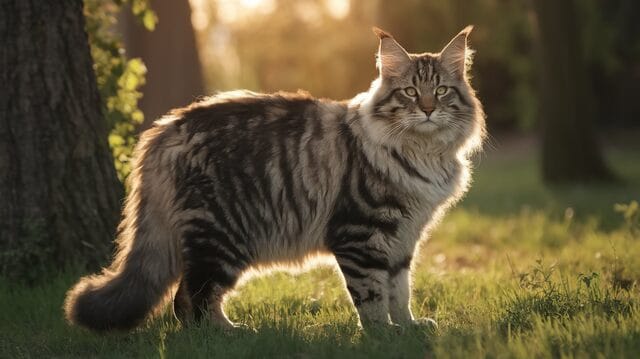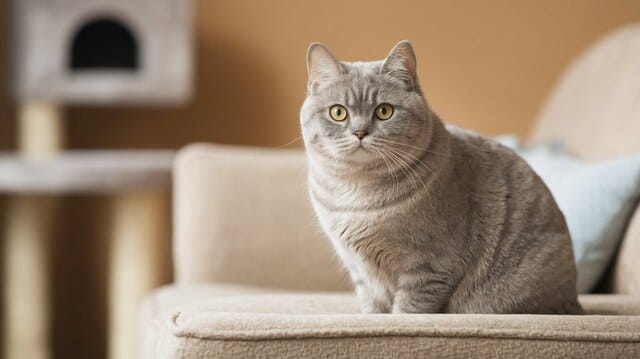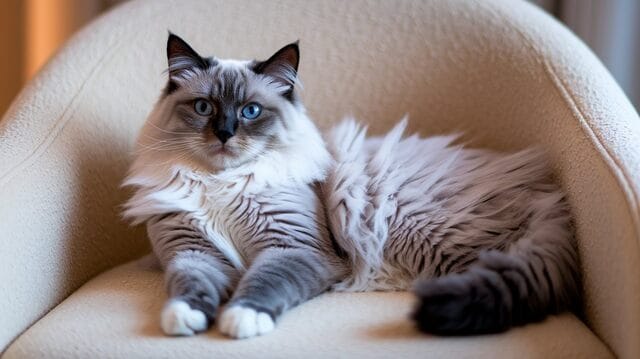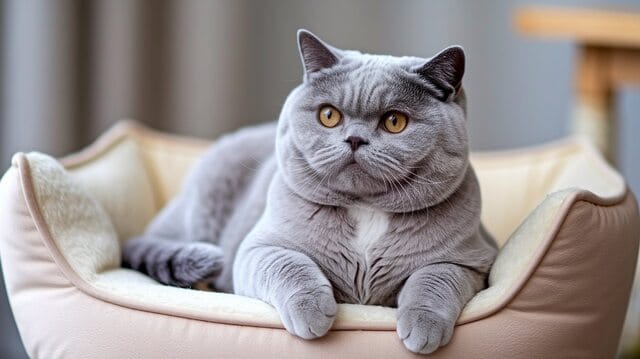
If you’ve ever dreamed of owning a miniature leopard, Bengal cats might be the perfect pet for you! With their stunning spotted coats, endless energy, and highly intelligent nature, Bengals are one of the most fascinating domestic cat breeds out there.
But don’t be fooled by their wild looks—Bengals are affectionate, playful, and love interacting with their humans. That said, they require a lot of attention and stimulation, making them best suited for owners who can keep up with their active lifestyle.
In this guide, we’ll dive into everything you need to know about Bengal cats—including their history, personality, care requirements, and whether they’re the right fit for you.
History & Origins of the Bengal Cats
The Bengal cat is one of the few domesticated breeds that has wild ancestry. Unlike most cats, which evolved naturally over time, Bengals were specifically bred to look exotic while still having the temperament of a domestic feline.
A Mix of Wild & Domestic
The breed was developed in the 1960s, when a breeder named Jean Mill crossed an Asian Leopard Cat (a small wild feline) with a domestic cat. The goal? To create a cat with the beautiful spots of a leopard but the friendly nature of a house cat.
By the 1980s, Bengals were recognized as an official breed, and their popularity has skyrocketed ever since!
💡 Fun fact: Despite their wild heritage, Bengal cats are 100% domesticated and make excellent pets when properly trained.
Bengal Cat Personality & Behavior
If you’re looking for a lazy lap cat, a Bengal probably isn’t the right choice. These cats are full of energy, incredibly smart, and love to explore.
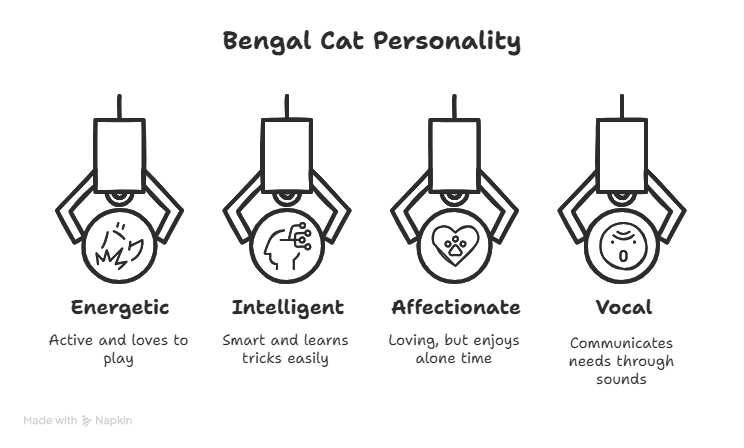
1. Energetic & Playful
Bengals are known for their endless energy. They love:
✔️ Climbing to high places (expect to find them on top of shelves!).
✔️ Chasing toys and running around the house.
✔️ Playing fetch—yes, like a dog!
💡 Tip: Bengals need plenty of physical activity, so having a cat tree, scratching posts, and interactive toys is a must.
2. Highly Intelligent & Trainable
Bengals are one of the smartest cat breeds and can:
✔️ Learn tricks like sit, high five, and fetch.
✔️ Be leash-trained for outdoor adventures.
✔️ Even figure out how to open doors or turn on faucets!
💡 Tip: If you don’t keep a Bengal entertained, they’ll find ways to entertain themselves—sometimes in ways you won’t like!
3. Affectionate but Independent
While Bengals love their humans, they’re not necessarily the type of cat that wants to cuddle all day. Instead, they prefer:
✔️ Interactive playtime over sitting on your lap.
✔️ Following you around the house to see what you’re up to.
✔️ Socializing on their own terms—they’ll let you know when they’re in the mood for affection!
4. Vocal & Communicative
Bengals are chatty cats that use a variety of sounds to communicate, including:
✔️ Chirps when they’re excited.
✔️ Meows to get your attention.
✔️ Trills as a way of saying hello.
💡 Tip: If you prefer a quiet cat, a Bengal might not be the best choice—they love to “talk”!
Bengal Cat Appearance & Coat Patterns
One of the most striking things about Bengals is their leopard-like coat.
1. Sleek, Muscular Build
Bengals have:
✔️ A strong, athletic body (they’re excellent climbers!).
✔️ A long, lean frame built for speed and agility.
✔️ Large paws and powerful hind legs, allowing them to jump to impressive heights.
2. Beautiful Coat Colors & Patterns
Bengals come in several colors and patterns, including:
✔️ Spotted Bengals – Resemble mini leopards with dark spots on a golden, silver, or charcoal background.
✔️ Marbled Bengals – Have swirling patterns instead of spots, giving them a unique, wild look.
💡 Fun fact: Bengals have a unique “glitter effect” in their fur, making them shimmer in the light!
How to Care for a Bengal Cat
Bengals are low-maintenance in some ways—but they require a lot of attention and enrichment.
1. Diet & Nutrition
✔️ Bengals need high-protein diets to fuel their energy levels.
✔️ Many Bengal owners feed a raw diet to mimic what their wild ancestors ate.
✔️ Wet food is generally better than dry kibble to keep them hydrated.
2. Exercise & Enrichment
✔️ Provide daily play sessions with wand toys, laser pointers, or interactive games.
✔️ Install a cat tree or cat wheel to give them space to climb and run.
✔️ Rotate toys regularly to keep them from getting bored.
💡 Tip: A bored Bengal is a destructive Bengal! Keep them engaged to avoid behavioral issues.
3. Grooming Needs
✔️ Bengals have a short, sleek coat that only requires weekly brushing.
✔️ Regular nail trimming and ear cleaning will keep them in top shape.
4. Training & Socialization
✔️ Bengals respond well to positive reinforcement training.
✔️ Use treats, clickers, and praise to encourage good behavior.
✔️ Early socialization helps them become confident around people and other pets.
Are Bengal Cats Good for Families?
✔️ Great for active households that love engaging with pets.
❌ Not ideal for people who want a low-energy lap cat.
✔️ Bengals can get along with dogs and other cats if introduced properly.
💡 Tip: Bengals thrive in homes that provide lots of stimulation and space to explore.
Common Bengal Cat Health Issues
Like all breeds, Bengals have some health concerns, including:
🚨 Hypertrophic Cardiomyopathy (HCM) – A common heart disease in cats.
🚨 Progressive Retinal Atrophy (PRA) – A genetic condition that affects vision.
🚨 Sensitive stomachs – Some Bengals have digestive issues and require special diets.
💡 Tip: Regular vet checkups help detect and manage these issues early.
Fun Facts About Bengal Cats
✔️ Bengals love water and may jump in the shower with you!
✔️ They’re one of the few breeds that enjoy playing fetch.
✔️ They have an adventurous spirit—some Bengals even enjoy hiking on a leash!
FAQs
Q: Are Bengal cats hypoallergenic?
✔️ While no cat is 100% hypoallergenic, Bengals produce less dander than other breeds.
Q: Do Bengal cats need a lot of space?
✔️ Yes! They do best in homes with vertical climbing areas and room to run.
Q: How much does a Bengal cat cost?
✔️ Bengals can range from $1,000 to $5,000+, depending on lineage and breeder.
Also Read - How to Introduce Cats to Dogs: 5 Step Guide
Final Thoughts
Bengal cats are stunning, intelligent, and full of energy—but they require a dedicated owner who can keep up with their active lifestyle.
🐾 They need space, stimulation, and plenty of playtime.
🐾 They’re affectionate but independent.
🐾 They’re not a typical lap cat—but they’ll always keep you entertained!
💬 Do you have a Bengal cat? Share your experiences in the comments below! 🐱👇

